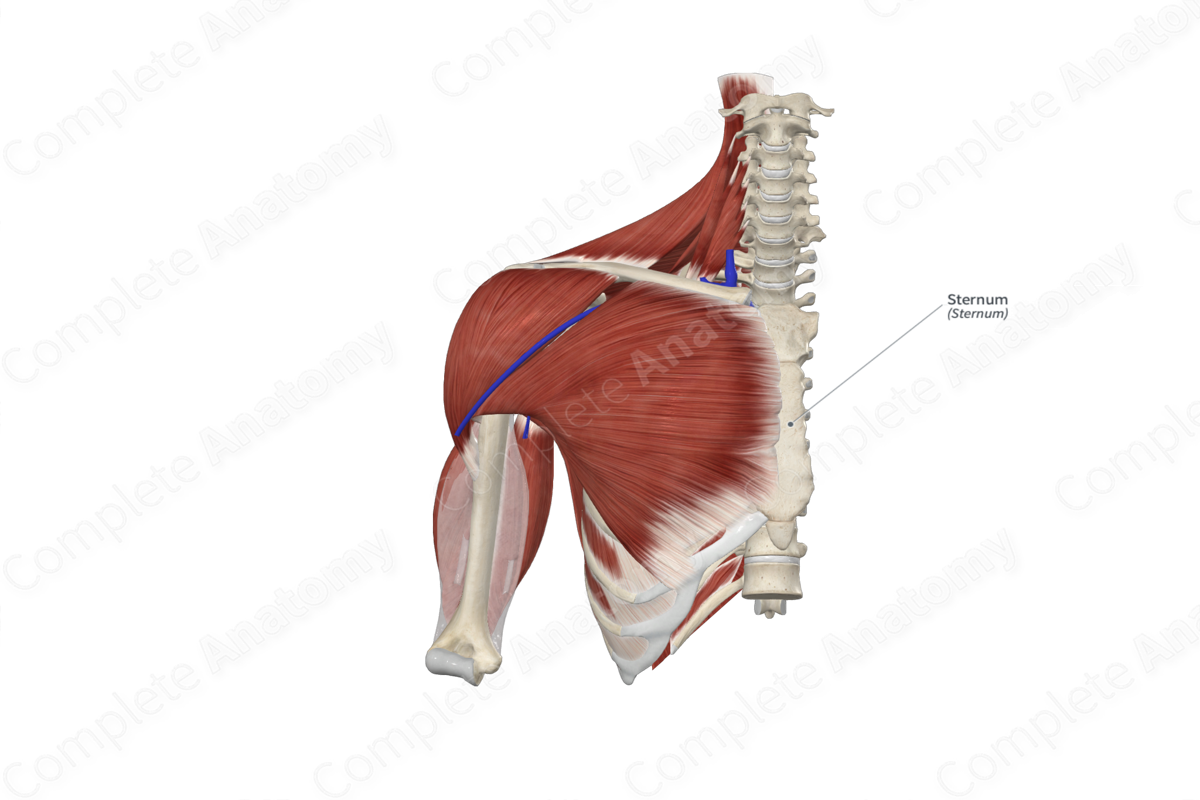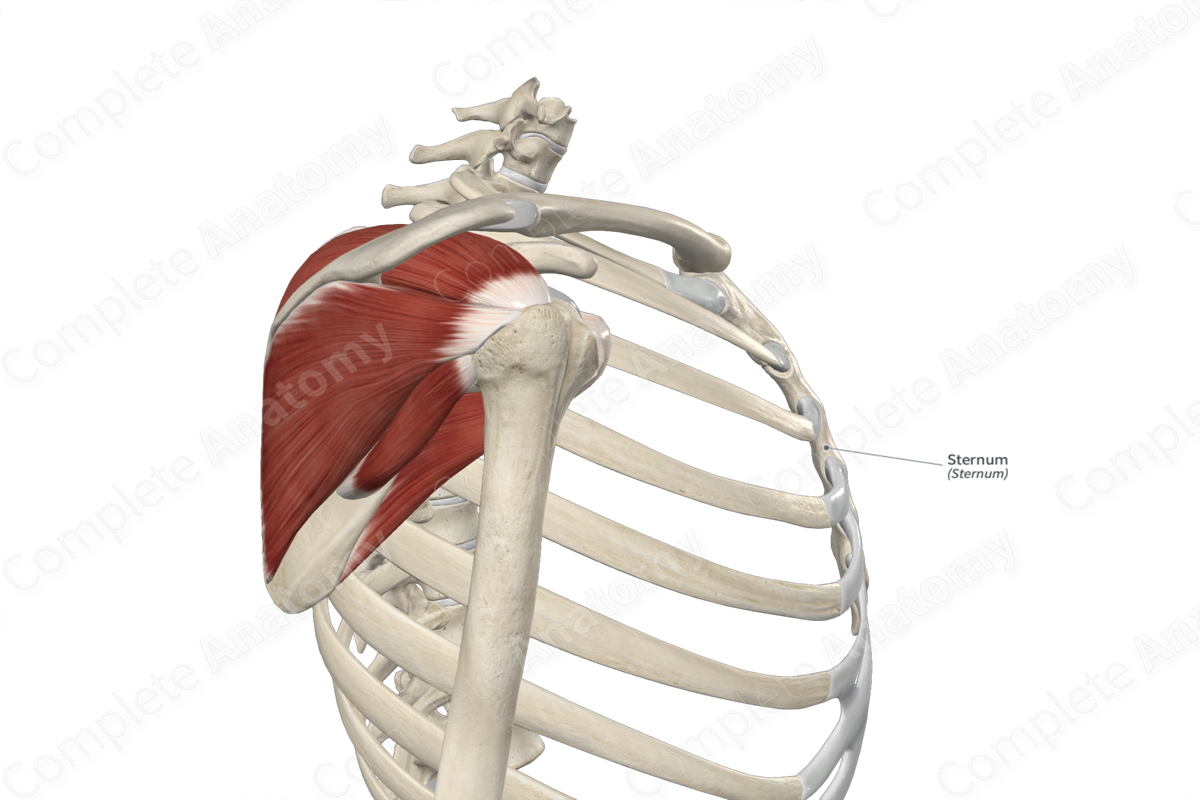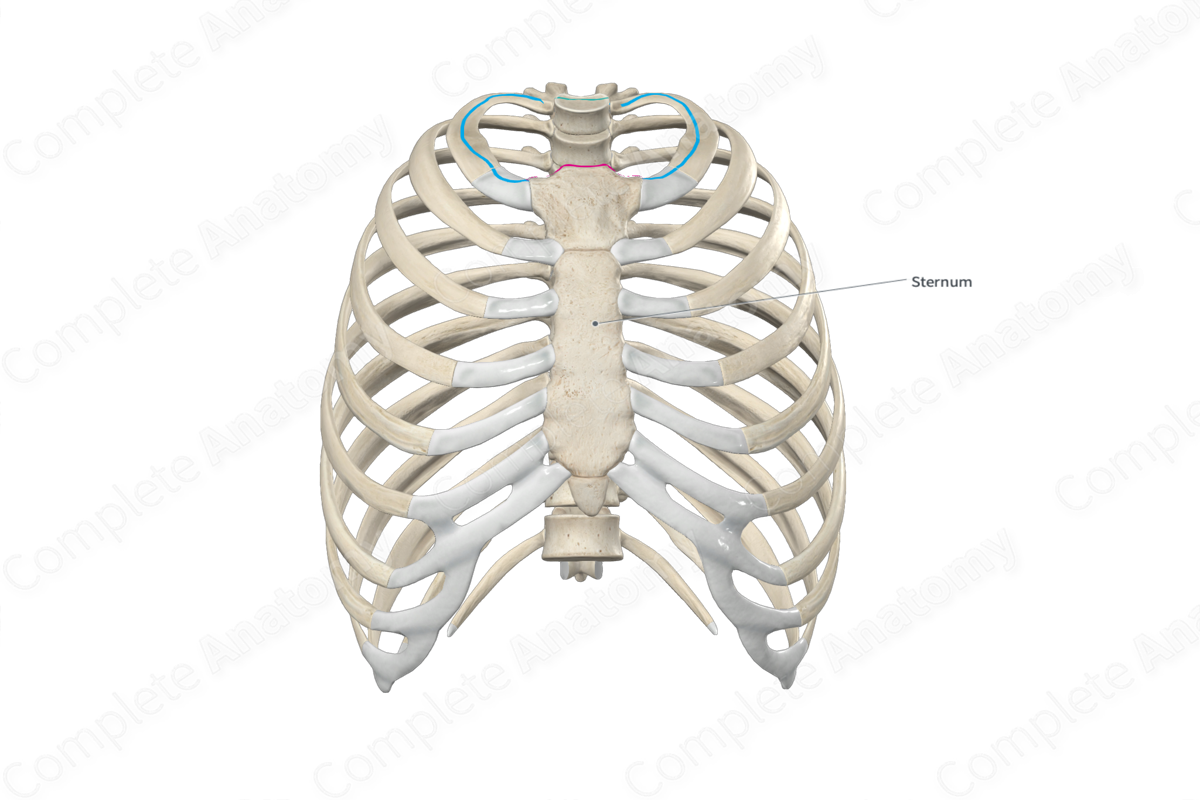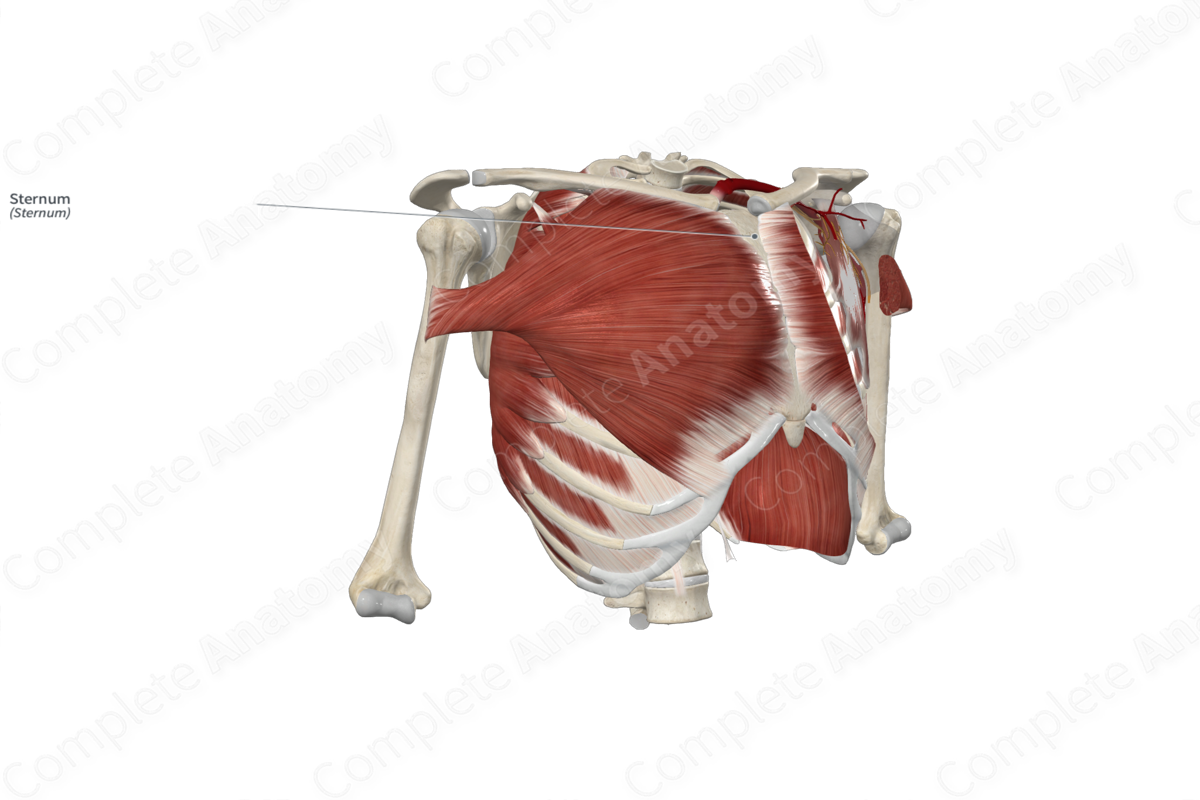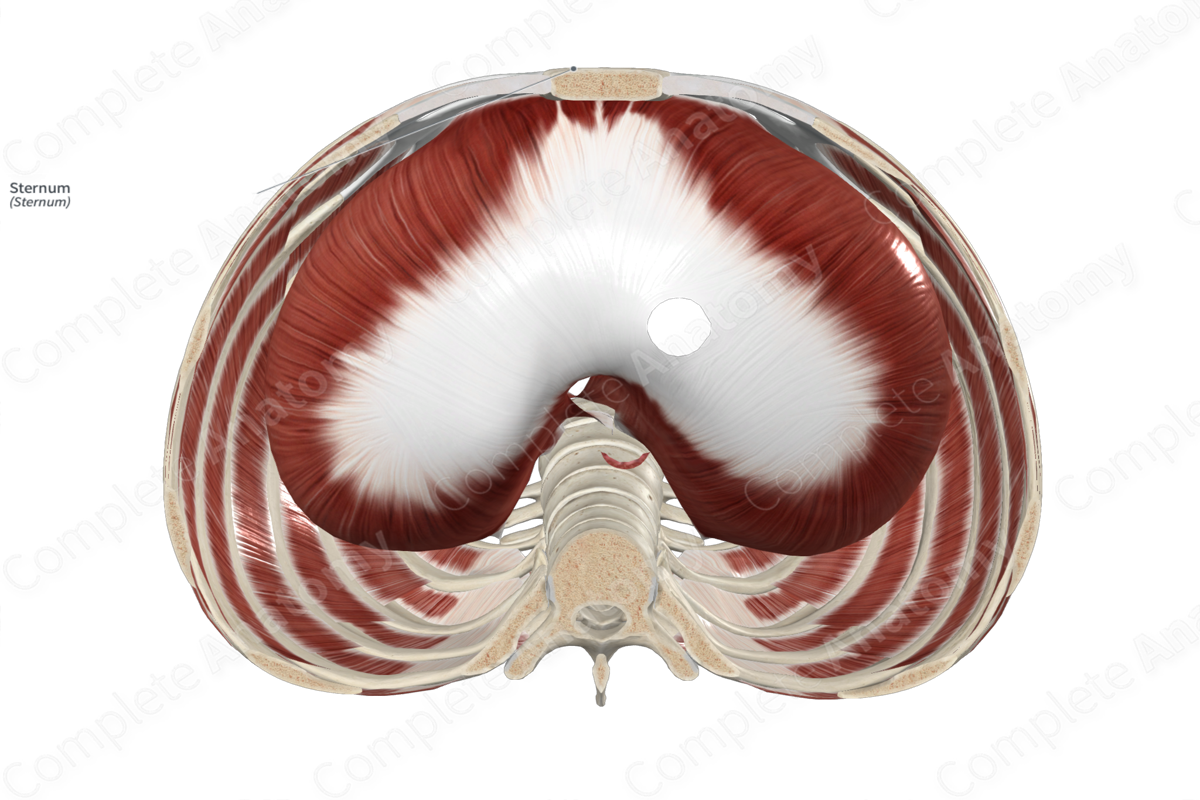
Sternum Quick Facts
Location: Thoracic cage.
Bone Type: Flat bone.
Key Features: Manubrium, body, xiphoid process, anterior and posterior surfaces, costal notches, and sternal angle.
Articulates With: Clavicle and costal cartilages.
Arterial Supply: Perforating branches of internal thoracic arteries.
Sternum Key Features & Anatomical Relations
The sternum (or breastbone) is one of the two groups of bones of the thoracic cage, the other being the ribs. It is found along the midline on the anterior aspect of the thoracic cage, is classified as a flat bone, and includes the following bony features:
- parts: manubrium, body, and xiphoid process;
- surfaces: anterior and posterior surfaces, and lateral borders;
- landmarks: costal notches, sternal angle, jugular notch, and transverse ridges.
More information regarding these and other bony features can be found in the Parts, Surfaces, and Landmarks tabs for this bone.
The sternum is located:
- anterior to the mediastinum;
- medial to the clavicle and first to seventh costal cartilages.
It articulates with the:
- clavicles at the sternoclavicular joints;
- first to seventh costal cartilages at the costosternal joints.
Sternum Ossification
Ossification of the sternum occurs at ossification centers found in the:
- manubrium, which appears in utero during the fifth month;
- body of the sternum, with centers found in each of the four sternebrae that form the body of the sternum, and all appear in utero during the fifth to sixth months;
- xiphoid process, which appears during the third year or later.
These ossification centers fuse with each other during puberty and the twenty-fifth year; however, the manubrium does not fuse with the body and they remain articulated with each other via the manubriosternal joint (Standring, 2020).
Sternum Variations
In some individuals:
- the manubrium and body of the sternum may be fused together;
- the body of the sternum may have a sternal foramen;
- the xiphoid process and body of the sternum may be partially fused or not fused together at all;
- the xiphoid process may be present as pointed, blunt, bifid, or hook-like in appearance (Tubbs, Shoja and Loukas, 2016).
The sternum also displays sexual dimorphism. It is longer in males and its suprasternal notch is located at the level of the second thoracic vertebra. The suprasternal notch in females is at the level of the third thoracic vertebra. The sternal angle is also more pronounced in males (Standring, 2020).
Sternum Surface Anatomy
The anterior surfaces of the manubrium, body, and xiphoid process are all subcutaneous and easily palpable. The jugular notch can be palpated between the sternal ends of the clavicles. The sternal angle can be palpated at the level of the second costal cartilages.
Sternum List of Clinical Correlates
- Fracture of sternum
- Pectus excacatum
- Pectus carinatum
Sternum References
Standring, S. (2020) Gray's Anatomy: The Anatomical Basis of Clinical Practice. 42nd edn.: Elsevier Health Sciences.
Tubbs, R. S., Shoja, M. M. and Loukas, M. (2016) Bergman's Comprehensive Encyclopedia of Human Anatomic Variation. Wiley.
Learn more about this topic from other Elsevier products
Sternum

The anterior mediastinum is defined as the anatomic compartment bounded by the sternum, thoracic inlet, and anterior border of the heart.

